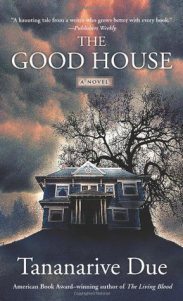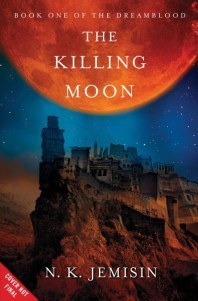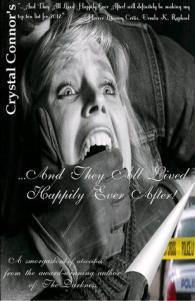Sumiko Saulson's Blog, page 31
February 1, 2016
Women in Horror Day at the Asylum/SecondLife
Women in Horror Day at the Asylum/SecondLife
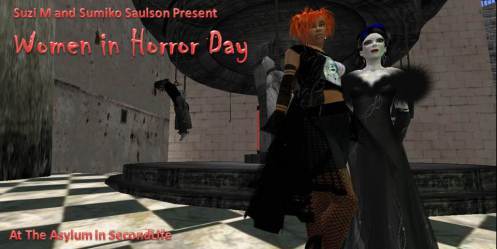
Saturday, February 27, 2016 – 2pm to 6 pm SLT (Pacific Time)
Horror authors Suzi M and Sumiko Saulson present Women in Horror Day at the Asylum in SecondLife. Suzi and Sumiko have a lot in common. Both women are goths, prolific writers in the horror genre, and fans of the 3D virtual world SecondLife. Suzi M has created a pair of gothic castles called Castle Nemesis and The Asylum, which are host to a number of attractions, including a library, movie theater, reading room, and two virtual dance clubs. The four hour event will feature an open mike poetry/prose reading, question and answer sessions with the authors, music, and dancing.
SUZI M:
Suzi M writes for fun and occasionally profit. The Immortal War Series – comprised of NEMESIS, LAMIA, and THE TOWER – can be found in both print and Kindle formats. In 2010, ten of Suzi’s short stories were published in the international Cover Stories Euphictional Anthology. Currently, Suzi is working on a several new projects and released The Lazarus Stone (Conspiracy Edit) under the pseudonym Xircon. When not busy with her own work or getting pictures and autographs of people who recognize her on the street, Suzi helps support the efforts of independent artists, writers, musicians, and film-makers.
You can follow her on Twitter @xirconnia or join the Suzi M Facebook fan page at https://www.facebook.com/SuziMOfficial
SUMIKO SAULSON:
Born to African-American and Russian-Jewish parents, she is a native Californian, and has spent most of her adult life in the Bay Area. She is a horror blogger and journalist, graphic novelist, horror, sci-fi and dark fantasy writer. Her works include “60 Black Women in Horror,”“Death’s Cafe: Ashes and Coffee,” “Solitude,” “Warmth”, “Happiness and Other Diseases,” “Somnalia,” “Insatiable,” the Young Adult horror novella series “The Moon Cried Blood”, and the short story anthology “Things That Go Bump in My Head.”
Visit her at http://www.SumikoSaulson.com
In SecondLife, contact Miki Bizet, Cinnamon Zemenis, Nemesis Navarathna or Xirconnia Morphett


January 18, 2016
Pride and Prejudice and Zombies Book Review by Maria Ramos
 Maria is a writer interested in comic books, cycling, and horror films. Her hobbies include cooking, doodling, and finding local shops around the city. She currently lives in Chicago with her two pet turtles, Franklin and Roy.
Maria is a writer interested in comic books, cycling, and horror films. Her hobbies include cooking, doodling, and finding local shops around the city. She currently lives in Chicago with her two pet turtles, Franklin and Roy.
You can follow her on Twitter @MariaRamos1889.
Pride and Prejudice and Zombies Book Review
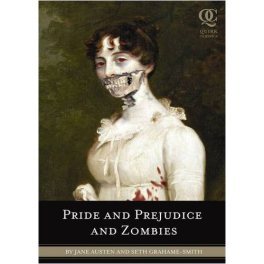 Zombies, vampires, and other creepy crawlies are currently enjoying their 15 minutes of fame, to the delight of horror fans everywhere. Not only that, but the groaning death machines of yore have given way to more fun, hip monsters that the whole family can enjoy watching. Pride and Prejudice and Zombies fits right into this new genre, which also includes gems like Abraham Lincoln: Vampire Hunter, Victor Frankenstein, and the even more whimsical zombie romance, Warm Bodies. Like many great films before it, Pride and Prejudice and Zombies started its life as a book, and with the movie’s release date fast approaching, it’s time to take another look at the source material.
Zombies, vampires, and other creepy crawlies are currently enjoying their 15 minutes of fame, to the delight of horror fans everywhere. Not only that, but the groaning death machines of yore have given way to more fun, hip monsters that the whole family can enjoy watching. Pride and Prejudice and Zombies fits right into this new genre, which also includes gems like Abraham Lincoln: Vampire Hunter, Victor Frankenstein, and the even more whimsical zombie romance, Warm Bodies. Like many great films before it, Pride and Prejudice and Zombies started its life as a book, and with the movie’s release date fast approaching, it’s time to take another look at the source material.
Before reading a single word, the premise of the book is already genius. It is loosely based 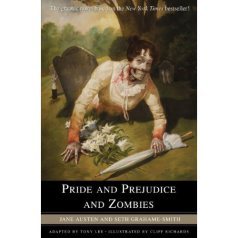 on the 1813 novel by Jane Austen about a group of sisters and their struggle to see themselves settled in life. Author Seth Grahame-Smith took that novel and turned it on its head in the best way possible, while still retaining the writing style and tone of the Regency-era original. Taking what was an extremely proper tale about the search for a suitable husband and introducing face eating monsters into it could not help but be entertaining. Writing the solemn and sometimes prim maidens as capable warriors instead of damsels in distress elevated the entertainment tenfold.
on the 1813 novel by Jane Austen about a group of sisters and their struggle to see themselves settled in life. Author Seth Grahame-Smith took that novel and turned it on its head in the best way possible, while still retaining the writing style and tone of the Regency-era original. Taking what was an extremely proper tale about the search for a suitable husband and introducing face eating monsters into it could not help but be entertaining. Writing the solemn and sometimes prim maidens as capable warriors instead of damsels in distress elevated the entertainment tenfold.
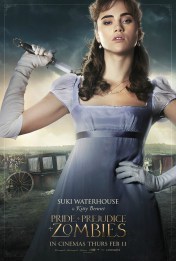 In fact, prim is the last word that comes to mind about heroine Elizabeth Bennet. The original character was somewhat unforgiving and self righteous – this modern adaptation is positively implacable in her quest for justice, and has no qualms about getting her hands dirty in the process. Mr. Bennet goes from being a very passive and absentminded father to having trained his daughters to be his own personal army. Not all the characters have changed so drastically, however. Mrs. Bennet still has marriage very firmly on the mind, though the zombie hordes roaming the countryside complicate her personal mission. Wickham is still a fortune hunting cad and Bingley still relies a little too heavily on Darcy’s opinion. Other key plot points also remain the same, including Darcy’s original misjudgment of his friend’s romantic prospects and Lydia Bennet’s unfortunate elopement.
In fact, prim is the last word that comes to mind about heroine Elizabeth Bennet. The original character was somewhat unforgiving and self righteous – this modern adaptation is positively implacable in her quest for justice, and has no qualms about getting her hands dirty in the process. Mr. Bennet goes from being a very passive and absentminded father to having trained his daughters to be his own personal army. Not all the characters have changed so drastically, however. Mrs. Bennet still has marriage very firmly on the mind, though the zombie hordes roaming the countryside complicate her personal mission. Wickham is still a fortune hunting cad and Bingley still relies a little too heavily on Darcy’s opinion. Other key plot points also remain the same, including Darcy’s original misjudgment of his friend’s romantic prospects and Lydia Bennet’s unfortunate elopement.
This combination of old and new, demure and zany, come together to form what is 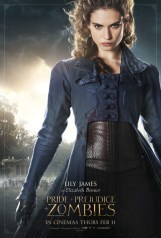 perhaps the best adaptation of an Austen book the world has seen in recent years. Though many older movie versions of Pride and Prejudice can be found on your local channels and through cable TV, including some which are themselves well worth watching, none are as original as this latest insane attempt. Battles of wit are turned into real knock down, drag out fights. Social slights are punishable by far more than behind-the-gloves gossip, and readers can be sure that any passive aggressive behavior in the original novel has been re-written without the passivity. Author Grahame-Smith was reportedly given the idea for the book by editor Jason Rekulak, and if that is the case he owes Rekulak a very nice bottle of wine in thanks.
perhaps the best adaptation of an Austen book the world has seen in recent years. Though many older movie versions of Pride and Prejudice can be found on your local channels and through cable TV, including some which are themselves well worth watching, none are as original as this latest insane attempt. Battles of wit are turned into real knock down, drag out fights. Social slights are punishable by far more than behind-the-gloves gossip, and readers can be sure that any passive aggressive behavior in the original novel has been re-written without the passivity. Author Grahame-Smith was reportedly given the idea for the book by editor Jason Rekulak, and if that is the case he owes Rekulak a very nice bottle of wine in thanks.
If the film adaptation is half as clever as the book, there’s no way it won’t become a cult classic. Director is also the author of the screenplay, and has previously worked on such projects as How To Lose A Guy In 10 Days and Charlie St. Cloud. Though the tone of this project is decidedly different, he certainly has the industry experience to pull it off. Actors Lily James and play the central characters and are both photogenic and charming enough to pull in an audience. While better books than this have been ruined by bad movie adaptations, there’s a lot of reason to hope that this time they’ll get it right.


December 19, 2015
Insatiable Visits The Asylum
I had fun creating SecondLife avatars of my characters from “Insatiable” – the third book in the “Somnalia” trilogy (which started with “Happiness and Other Diseases.”) Then I took them on a tour of Suzi M‘s Asylum in SecondLife. You can pick up free sample chapters from her book “Nemesis” all over the Castle Nemesis and the Asylum in SecondLife. I also have a bookstore in SecondLife at the Buffalo Readings Theater.





December 18, 2015
How Victor Frankenstein Attempts to Revive Shelley’s Classic
Maria is a writer interested in comic books, cycling, and horror films. Her hobbies include cooking, doodling, and finding local shops around the city. She currently lives in Chicago with her two pet turtles, Franklin and Roy. You can follow her on Twitter @MariaRamos1889.
How Victor Frankenstein Attempts to Revive Shelley’s Classic

Victor Frankenstein
Frankenstein’s undead monster has been depicted on film over 70 times, each a little different than the last. The galvanist experiments of physicist Giovanni Aldini first popularized the notion of reviving the dead via electric current. These morbid experiments later inspired Mary Shelley’s novel Frankenstein. Since its publication in 1818, Frankenstein has served as source material for theatrical productions, movies, songs, and even video games on top of being a pop culture phenomenon years after it first appeared on the page. Victor Frankenstein, starring James McAvoy and Daniel Radcliffe, adds a fresh new perspective to this oft-told tale by majorly focusing on Frankenstein and his assistant, Igor’s relationship more than anything else.
The original Frankenstein depicts the trials and tribulations of Victor Frankenstein, a university student determined to unlock the secret of life and mortality. Upon discovering the process for reviving the dead, Victor reanimates a corpse composed of body parts taken from a graveyard. Victor’s monster wreaks havoc on his life and murders his loved ones, leading readers to question the morality of “playing God” through scientific experimentation.
The newest film to depict Frankenstein in all his glory, Victor Frankenstein seeks to retell Shelley’s classic horror story from the perspective of Igor, the misfit assistant of Victor Frankenstein which, at first, seems like a refreshing change from the original tale. Igor () is meant to be the film’s voice of reason, challenging Frankenstein () and questioning his outlandish attempts to revive the dead. The film focuses on the budding relationship between Victor and Igor, relegating the story of Frankenstein’s monster and what it represents to the background.
Paul McGuigan‘s interpretation of Frankenstein bears more resemblance to other cinematic depictions of the tale than it does to Shelley’s revered novel. In the original tale, Victor Frankenstein works alone – no character named Igor is depicted in the novel at all. Rather, Igor is a composite character, based on different hunchbacked assistants and mad scientists featured in Universal’s Frankenstein films produced throughout the 1930s and ’40s.
Victor Frankenstein places Igor firmly in the film’s foreground. In this incarnation, Igor is a hunchbacked freak discovered by Frankenstein during a visit to the circus. When Frankenstein sees Igor save trapeze artist Lorelei () after a horrific fall, he decides that Igor is the assistant he’s always needed and takes him in, fixing his deformities. The film continues to explore the relationship between the two men, their quarrels with a police inspector, and Igor’s budding romance with Lorelei.
Radcliffe, McAvoy, and Findlay all give commendable performances in the film. McAvoy portrays a comically unhinged Frankenstein, shooting spittle with each of his booming proclamations. Radcliffe puts in a solid performance as Igor, the voice of moral reason tempering Frankenstein and his wild ambitions.
Unfortunately, Victor Frankenstein neglects to explore the most fascinating element of Shelley’s tale: Frankenstein’s monster himself. Is Frankenstein’s monster a natural-born killer or did Victor’s neglect make him one? This intriguing question is central to Shelley’s novel. Though the monster commits numerous gruesome acts throughout the tale, Frankenstein’s own moral failings and dreams of conquering death are perhaps even more heinous than the monster’s bitter rebellion.
Instead of subtly leading us to contemplate Victor’s own monstrous tendencies, Victor Frankenstein relies upon Igor to voice the audience’s moral qualms. This heavy-handed moralizing, coupled with the film’s neglect of Frankenstein’s monster, are perhaps Victor Frankenstein‘s two biggest failings.
Though the film offers a new perspective on Shelley’s novel, the film is hardly among the best interpretations of this timeless story. Universal’s 1931 classic Frankenstein and Mel Brooks’ farcical Young Frankenstein (1974) are far more engaging depictions of the tale. Both Frankenstein and Young Frankenstein take many liberties with Shelley’s source material. The 1931 film, for instance, includes a hunchbacked assistant named Fritz, portrays the monster as a mute savage, and attributes the monster’s behavior to his criminal brain rather than to Victor’s neglectful behavior. Young Frankenstein tells the tale of Frankenstein’s grandson, Frederick, and comically depicts the relationship between Frederick and his creation. The film’s happy ending vastly differs from the tragic conclusion of Shelley’s work and you can still check out this ‘70s classic on television (more info here).
Though many films have interpreted Shelley’s novel in unique ways, they maintain a focus on Frankenstein’s monster. By naming Victor and Igor the stars of the show, Victor Frankenstein abandons the very best part of the Frankenstein story. Indeed, critic and viewer appraisals of Victor Frankenstein have ranged from lukewarm to abysmal. Even the most dedicated Franken-fans will be disappointed by this mediocre movie.
Despite its creative retelling of Shelley’s novel, Victor Frankenstein fails to live up to the successes of its many predecessors. By neglecting to tell the tale of Frankenstein’s monster, McGuigan’s film loses the very element that made Shelley’s Frankenstein so great. One can only hope that future Frankenstein films will learn from the failings of Victor Frankenstein. The story of Frankenstein’s monster is the tale that truly needs to be told.


December 5, 2015
Sumiko Saulson’s Black Women in Horror Writing #3: Tananarive Due
The third review in his series is of Tanarive Due’s “The Good House”
 Originally posted on Bryan's Pop Culture Hour:
Originally posted on Bryan's Pop Culture Hour:
The Good House by Tananarive Due
Middle-class, ordinary-people horror fiction is an intriguing breed. You know those horror novels that seem more concerned with the day-to-day lives of their protagonists, sidestepping it with scares only on occasion? That is what I’m talking about here.
Molded into its shape by a million Stephen King novels, this type of horror seems almost more slice-of-life than actual fright fest. King’s own It is oftentimes more a chronicle of small time living than it is an epic battle with a powerful ubiquitous clown-giant-spider monster-thing. These novels dedicate so much time to laying out the land—the outer activities and inner thoughts our protagonists, the realism of the setting, the personal conflicts existing above the surface of whatever eldritch monstrosity is about to start wreaking havoc.
I believe that Tananarive Due’s The Good House epitomizes this style of horror. Due’s narrative is about the characters lives…
View original 559 more words


Sumiko Saulson’s Black Women in Horror Writing #2: N.K. Jemisin
This is the second in Bryan Onion’s series of reviews of authors from the 60 Black Women in Horror series, it’s N.K. Jemisin
 Originally posted on Bryan's Pop Culture Hour:
Originally posted on Bryan's Pop Culture Hour:
The Killing Moon by N.K. Jemisin
In Gujareeh, a highly theocratic monarchy maintains ultimate justice in the form of the gatherers. These gatherers are a vaguely vampiric priest sect in the Gujareen government. They feed on the magic—a spiritual substance called dreamblood—of those deemed corrupt by their goddess, Hananja. Peace apparently reigns in Gujareeh as a result of the gatherer presence.
But, at the start of this compelling novel, a gatherer named Ehiru begins to question his place in this society, whether or not he is righteous in ending the lives of the apparently corrupt.
N.K. Jemisin’s The Killing Moon is predominantly concerned with world-building. It’s definitely a world worth getting engrossed in. Inspired by ancient Egyptian societies and mythology—much as Lloyd Alexander was inspired by ancient Persia in The First Two Lives of Lucas-Kasha—Jemisin illustrates something truly unique here. It’s a dark fantasy, bordering on horror. The oddness…
View original 407 more words


Sumiko Saulson’s Black Women in Horror Writing #1: Crystal Connor
Bryan Onion is writing a series of reviews of author from the 60 Black Women in Horror biographical text I put together for Women In Horror month. I’m going to repost some.
 Originally posted on Bryan's Pop Culture Hour:
Originally posted on Bryan's Pop Culture Hour:
…and They All Lived Happily Ever After!: A Smorgashboard of Atrocities by Crystal Connor
My project, and who knows how long it will take, is to work my way through Sumiko Saulson’s list of 60 black women in horror writing. I’ve already read the greats—Toni Morrison and Octavia Butler—so I thought I would start out with someone lesser known. I found Crystal Connor’s And They All Lived Happily Ever After: A Smorgasbord of Atrocities on Audible. It looked interesting—a screaming woman takes up the entire cover art, and what’s horror without that? I used one of my two monthly tokens on it and gave it a listen.
Well, it was quite the soundtrack to doing dishes, putting away laundry, and crushing cardboard boxes at work.
View original 568 more words


October 16, 2015
Monster’s Ball/Through The Looking Glass at Burning Life
Me and my friend Penelope Parx are participating in BURN2- Carnival of Mirrors 2015 which is the SecondLife incarnation of BurningMan.
(from the Burn2 – Carnival of Mirrors Website):
BURN2 Carnival of Mirrors Event
BURN2 2015: Carnival of Mirrors will open on Saturday the 17th of October at noon SLT with a procession by the Lamplighters, beginning at their Village which is not far from the Welcome Gate where you arrive. You are all invited to explore, experience and express the joy of the Burn and revel in the music, art and colourful constructions born out of the imaginations of creative Burners. And, of course there will be fire!
More information about the event can be seen via the menu at the left side of the home page here on www.burn2.org.
We invite members of the press to come and visit on Friday, the 16th of October, before the opening of this festival of fire that is an echo of Burning Man in a virtual setting, so they may pass along a teaser of what has been prepared for the celebration of the Burn. With a Press Pass you will be able to visit from 10:00am to 8:00pm SLT. BURN2 Staff and creatives will be on hand to answer questions and share information. Apply for your Press Pass! We look forward to seeing you and saying, “Welcome Home!”
Monster’s Ball/Through The Looking Glass
by Penelope Parx and Miki Bizet
 The Monster’s Ball is a “Through the Looking Glass” duality themed dance illustrating the tension between how we view ourselves and how we are viewed by others. Penelope Parx’s sculpture depicts a mirror which, viewed from one side, shows ordinary people viewing themselves as monsters – from the other, monsters who view themselves as quite ordinary. Inside of each of us is a monster,and each of us can be viewed as monstrous by others.
The Monster’s Ball is a “Through the Looking Glass” duality themed dance illustrating the tension between how we view ourselves and how we are viewed by others. Penelope Parx’s sculpture depicts a mirror which, viewed from one side, shows ordinary people viewing themselves as monsters – from the other, monsters who view themselves as quite ordinary. Inside of each of us is a monster,and each of us can be viewed as monstrous by others.
Miki Bizet’s contribution to “The Monster’s Ball takes place in a crazy alternate version of Death Guild’s Thunderdome, a fixture at the real Burning Man. In the Looking Glass world, all of the battles are out on the dancefloor. In the central feature, “Love’s A Crazy Ride,” a spinning carousel invites people to dance in groups and pairs. On the exterior, singles spin on their own rather than in tandem, because even monsters are out seeking kindred spirits.
I have a couple of friends who go to Thunderdome in real life regularly, most notably Marisa Lenhardt, an opera diva 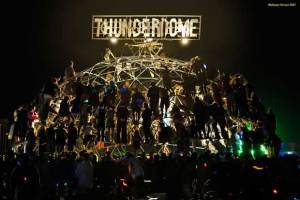 who (from her website) “has had the honor of appearing at multiple performances with world-famous diva Frederica von Stade, has performed with the Chris Brubeck trio and the Oakland.” My friend Porter Venn also regularly BurningMan and goes there regularly- maybe we can build PlanetEarth, his 80s themed dance club on the Playa, in SecondLife some other year.
who (from her website) “has had the honor of appearing at multiple performances with world-famous diva Frederica von Stade, has performed with the Chris Brubeck trio and the Oakland.” My friend Porter Venn also regularly BurningMan and goes there regularly- maybe we can build PlanetEarth, his 80s themed dance club on the Playa, in SecondLife some other year.
Back to the virtual world at hand: the freebies at the Monster’s Ball are plentiful and surreal, mostly wearables: a Sharktopus plushy, a crate of t-shirts (thanks to Hekate Galatea for the “Secret Chicken” ones), a mutant zombie costume, a pet snake, and a pet rat.
I will do my best to stop by during the press junket today, unless life intervenes.
http://maps.secondlife.com/secondlife/Burning%20Man-%20Frog%20Pond/60/116/24

Lots of Freebies!


October 12, 2015
Vampire Culture in Our Society (Guest Blog by Maria Ramos)
 Maria is a writer interested in comic books, cycling, and horror films. Her hobbies include cooking, doodling, and finding local shops around the city. She currently lives in Chicago with her two pet turtles, Franklin and Roy.
Maria is a writer interested in comic books, cycling, and horror films. Her hobbies include cooking, doodling, and finding local shops around the city. She currently lives in Chicago with her two pet turtles, Franklin and Roy.
You can follow her on Twitter @MariaRamos1889
Find her earlier guest blog about Bram Stoker’s Dracula here..
Vampire Culture in Our Society
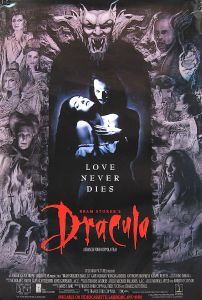 The myth of the vampire has existed almost as long as civilization has existed, and longer than just about any other monster myth. Whether tagged with the label ‘vampire’ or not, creatures with the telltale characteristics of rising from the dead and having an insatiable lust for blood have populated the mythologies of various cultures back hundreds of years.
The myth of the vampire has existed almost as long as civilization has existed, and longer than just about any other monster myth. Whether tagged with the label ‘vampire’ or not, creatures with the telltale characteristics of rising from the dead and having an insatiable lust for blood have populated the mythologies of various cultures back hundreds of years.
Today’s vampires are a far cry from their historical counterparts, having evolved over the years and with the times, as any enduring monster myth is prone to do. Still, with the abundance of today’s vampire stories catering to a younger and more mixed demographic by portraying the creature as sexy, brooding, and sometimes essentially good, it’s refreshing to see a series like The Strain with its at times ridiculous and slightly silly portrayals of the monsters who are nonetheless the scary monsters they were always meant to be.
Vampires, like zombies and other mythical monsters, have come to represent the fears and threats of whatever times in which they are created or resurrected. Our modern ideal of the vampire can invariably be traced back to Bram Stoker’s Dracula, composed in 1897. Even then, Stoker’s creation was a reflection of the fears of the times, both a commentary on the negative repercussions of sexual promiscuity within the strict Victorian society and a representative of the monstrous Jack the Ripper, who was haunting London streets at the turn of the century. What the original Dracula was not, until further evolution at the hands of later pop cultures, was sexy or alluring.
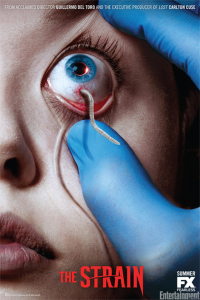 Even though Bela Lugosi’s portrayal of Dracula in the 1931 movie of the same name had already begun to change the original character into a younger, darker, and more aristocratic version of the monster – but he was still a monster in his own right and reflective of the fears of the times, including a fear of foreigners infiltrating and destroying all in their path. Fast forward several decades to the cold war era in which Christopher Lee’s version of Dracula was considered the epitome of all things foreign and evil, to the vampires of the 1960’s and 1970’s, enjoying sexual freedom without morals or discrimination, on to the Anne Rice vampires of the 1980’s, the Buffy the Vampire Slayer versions of the 1990’s, and to the True Blood, Vampire Diaries, and Twilight series vampires of today, looking so much like us but yet not us at all.
Even though Bela Lugosi’s portrayal of Dracula in the 1931 movie of the same name had already begun to change the original character into a younger, darker, and more aristocratic version of the monster – but he was still a monster in his own right and reflective of the fears of the times, including a fear of foreigners infiltrating and destroying all in their path. Fast forward several decades to the cold war era in which Christopher Lee’s version of Dracula was considered the epitome of all things foreign and evil, to the vampires of the 1960’s and 1970’s, enjoying sexual freedom without morals or discrimination, on to the Anne Rice vampires of the 1980’s, the Buffy the Vampire Slayer versions of the 1990’s, and to the True Blood, Vampire Diaries, and Twilight series vampires of today, looking so much like us but yet not us at all.
Given the influx over the last couple of decades of vampires geared toward a mostly teenaged and twenty-something audience featuring vampires that are defined by their brooding good looks and attacks of conscience, the creatures depicted in Guillermo del Toro and Chuck Hogan’s novel trilogy turned television series are refreshingly monstrous throwbacks to the legendary roots of the vampire – while still maintaining a side that’s unique and original.
The vampires of The Strain don’t look like us (I mean, just look at that tongue, for instance) or act like us, and they certainly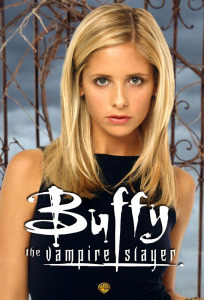 don’t maintain any type of sexual appetite after the disease effectively removes all trace of sexual organs as it runs its course. And yet they are supposedly mutated from human beings by way of a parasitic infection. Moreover, the infection of vampires in the novels have lead to a highly polluted New York in which the sky is dark all the time allowing the vampires to roam freely.
don’t maintain any type of sexual appetite after the disease effectively removes all trace of sexual organs as it runs its course. And yet they are supposedly mutated from human beings by way of a parasitic infection. Moreover, the infection of vampires in the novels have lead to a highly polluted New York in which the sky is dark all the time allowing the vampires to roam freely.
In a way, these vampires potentially represent our very real fears of the spread of global illnesses or epidemics and the effects on humanity.Many speculate that human activity, if left unchecked, could lead to a world like this of substantial pollution and quickly dwindling resources. Unless humanity starts paying closer attention and takes action in common sense situations, such as recycling and seeking renewable resources from energy providers and gas companies, we could end up in a post-apocalyptic society ourselves.
With the ongoing success of such franchises as True Blood and The Vampire Diaries, there’s no denying the audience appeal for vampires that resemble darker, scarier, and less inhibited versions of today’s teenagers, college students, and young professionals. But, just as with any mythical monster, as times change and global issues continue to evolve, so too will our vampire fictions.


October 7, 2015
Sentiment (Poetry)
SENTIMENT
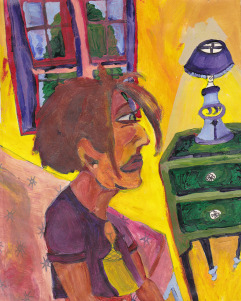
Artwork “Single Room Occupancy” by Sumiko Saulson
In a quiet place
Far away from the superficiality
Of exterior opinion
Where I and eye
Look into and without
From the place of our own
Soul dominion
I have become circumspect
With my own introspection
And upon redirect
Asked myself
A few questions
The answers were so obvious
When all around me was silence
It made me wonder why I ever found it
Necessary to speak
Wanting to be understood
Could be the undoing of us all
It’s a need to be loved
That has laid many low
My love was thoughtful
And quiet
was silent and sweet
So I slew her for the benefit
Of a world that finds all things feminine
Soft and weak
I broke her trembling hand
I burst her smiling lips
I turned and walked away
With my hand upon my hips
Some would call me strong because
I shot down the woman in me
But I could have been braver
I do understand
I do what I can
You’ll have to forgive me
I am only a man
I am only a man




